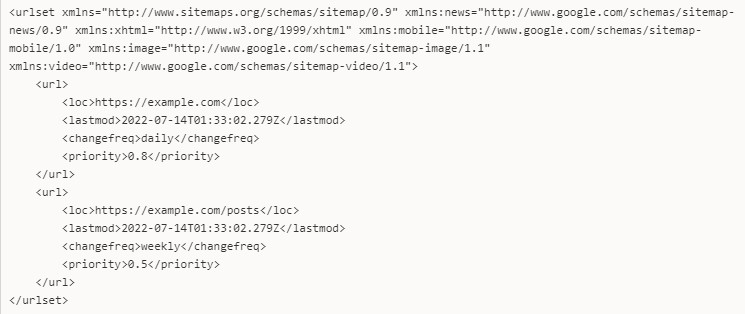Sitemaps are important in the world of web development. It increases the accessibility of your web pages and makes them more discoverable by people. Have you ever wondered how sites are matched and fetched when you type some keywords in the search bar of any search engine?
Basically, there are bots or automated systems that repeatedly scour the internet and get information on pages on the internet eligible for indexing. That way a search engine's algorithm has snippets of information about all sites it has crawled and adds them to its index based on certain priorities. That's why when you search keywords on Google or Bing, the results you get are blazingly fast.
Now there are a lot of criteria that determine when and if your page will be indexed by google. These could range from the
- accessibility/popularity of your web pages,
- Your page content
- The priority stack queue for URl indexing
There are a lot of websites and web pages added to the internet every day, so it will take a very long time before your web page is found and indexed, once you have created it.
There are a lot of ways you could improve your page's accessibility/popularity, You could share your page content to people via social media so there can be a troupe of visitors on your page, it increases the chances of your page getting discovered faster, You can also use backlinks from other webpages. These approaches are simple and easy to understand. With links from other sites linking back to your site or pages you want to index, you are increasing the chances of your pages getting crawled by web spiders.
These practices and a lot more others are applied by web developers, business owners and SEO experts to increase the discoverability of web pages. But you will need a lot of exposure and sometimes you will need to spend. This is where sitemaps come in, To note sitemaps are not a foolproof method of getting maximum exposure on your web pages. it just helps streamline the process and makes it easier. Understanding sitemaps and how they work will help you better in optimizing your website experience on the internet.
Sitemaps are usually XML(eXtensible Mark-up Language) or HTML(Hyper-Text Markup Language) coded snippets that contain and share detailed information about the web pages on your website, like its internal links, backlinks and page structure. This is a gold mine for web crawlers because it helps them navigate your site better. So instead of having these crawlers index one page at a time when they get a chance to, sitemaps give the crawlers access to all the URLs/web pages you want or do not want to index. Users can also view the sitemap.html file to understand your website more.
A generic sitemap should look like this

Now Sitemaps can be configured to do a lot of things, you can understand the hierarchy of a person's website by looking at their sitemap file. You can configure the priority of certain pages over others with the priority tag, and you can configure the frequency at which a page content changes with the changefreq tag. A sitemap should contain a set of URLs urlset each with tags that define the properties of the page the url belongs to.
These tags include:
locthe URL of the sitechangefreqprioritylastmod
The priority and changefreq tags are not mandatory fields and you would not confuse a web bot if you don't add them, but it is a good practice to detail all the information of your website in your sitemaps.
Once you have a sitemap with the necessary configuration. there are other steps you need to take. Usually, like web pages with absolute URLs, web crawlers can find sitemaps and crawl them too, but it might take a while for your sitemap to be discovered. The best approach is to register your sitemap on Google's search console. That way your web pages will be accessible by the google crawlers ASAP.
Once your sitemap is registered on the search google console, your sitemaps will be continuously run through and pages reindexed on the google search index.